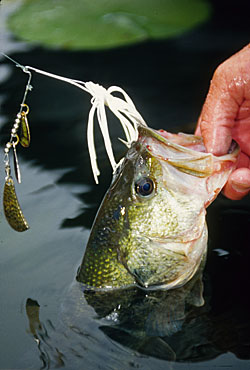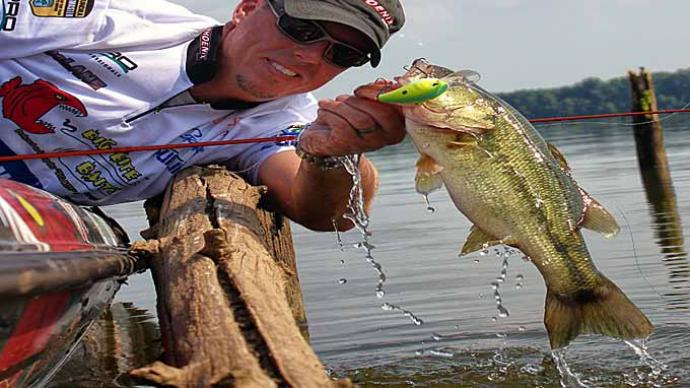
The topic of climate change is controversial in the United States, and there are more than a few doubters. In the rest of the world, it is widely acknowledged that the climate is changing because of atmospheric pollution caused by humans. I recently was asked by a former student, who is now a dean at a university in Thailand, to present a seminar to his faculty and graduate students. I assumed that he wanted me to talk about water quality in pond aquaculture. But, no, he wanted me to discuss the likely effect of climate change on pond fish culture.
I agreed to give such a presentation, and I had to spend several days organizing the material. I would like to share the gist of that presentation with you.
There is no doubt to a logical person that the atmospheric carbon dioxide concentration is increasing. The pre-industrial revolution (before about 1750) concentration has been estimated at 280 ppm, but atmospheric carbon dioxide concentration has been monitored since 1958 near the summit of the volcano Mauna Loa in Hawaii. In 1958, the atmosphere contained 315 ppm carbon dioxide; by early 2017, the concentration had steadily risen to 405 ppm. This increase has resulted primarily from carbon dioxide released by the combustion of fossil fuels.
Carbon dioxide, and several other atmospheric pollutants, absorb and hold heat. Thus, they increase the natural greenhouse effect of the atmosphere that results from cloud cover and water vapor and certain other naturally- occurring gases that absorb and hold heat. An increasing atmospheric carbon dioxide concentration would be expected to increase the average temperature of the atmosphere near the earth's surface.
It obviously is difficult to ascertain the average global temperature of the air above the earth's surface. However, based on records obtained at many locations over land and water, the increase between 1880 and 2012 was estimated to be 1.4°F. The rate of global temperature increase has roughly doubled since 1980. At least 50% of the increase in temperature can be attributed to the effects of release of carbon dioxide and other greenhouse gases into the atmosphere by human activities.
The rise in atmospheric carbon dioxide concentration is thought by most scientists to be the cause of global warming. It is predicted that the trend will continue, the results of which will be higher average global temperature, rising sea level because of melting polar ice and glaciers and thermal expansion of the ocean, and more extreme weather.
A higher atmospheric carbon dioxide concentration has increased the solubility of carbon dioxide (an acidic substance) in water. As a result, the pH of the ocean has declined about 0.1 pH unit (8.2 to 8.1) during the past four decades. This is negatively affecting marine organisms such as coral, molluscan shellfish, and plankton species that have shells made of calcium carbonate. At the lower pH, calcium carbonate is dissolving and leading to thinner shells on marine calcifers.
The predictions about the climate, sea level, and ocean pH for the future vary widely. It is quite clear that the atmospheric carbon dioxide concentration is increasing, but the exact nature and extent of the changes that will occur are unclear. A quote attributed to famous physicist Niels Bohr seems appropriate: "Prediction is very difficult, especially about the future."
The greater atmospheric carbon dioxide concentration and resulting increase in carbon dioxide solubility in water is enhancing the solubility of limestone and other sources of alkalinity. This is causing alkalinity of freshwater streams, ponds, and lakes to increase. For example, alkalinity of about 200 streams in Alabama increased from an average of 41.6 mg/L in 1972 to 47.2 mg/L in 2014. Greater alkalinity likely will cause a slight increase in pH in freshwater instead of a decrease as is being observed in the ocean.
The predicted increase in alkalinity of inland surface waters will not be great enough to affect pond management. The slight increase will not provide enough inorganic carbon to influence phytoplankton growth appreciably. Moreover, the greater solubility of limestone will not be enough to affect the liming rates for ponds.
A warmer climate will increase the moisture holding capacity of the air. This would be expected to increase both rainfall and evaporation rates—but possibly not in the same regions. The predicted increase in extreme weather may result in more years with abnormally high or abnormally low rainfall. This obviously could cause a greater flushing of ponds some years and lower water levels other years. There also could possibly be shifts in traditional rainfall patterns resulting in some areas becoming drier and others wetter, thereby affecting the amount of runoff into ponds.
Warmer water temperatures may be beneficial to fish production in some currently cool regions and detrimental in some regions that are already rather warm. Temperatures outside of the optimal range for a fish species usually decrease their production. Sub-optimal temperatures also result in stress that favors susceptibility offish to disease.
Blue-green algae are remarkably resilient organisms that tend to thrive in harsh environments. Increasing water temperatures would increase the likelihood of blue-green algal dominance of phytoplankton blooms in fertilized ponds. More blue-green algae would favor more low dissolved oxygen episodes. These algae also form unsightly scums on pond surfaces, they can cause off-flavor in fish, and some species produce toxins under certain conditions.
In summary, climate change could lead to more frequent and severe episodes of excess rainfall and runoff or drought. Warmer water also could lead to greater production in presently cooler areas and to lower production in presently warmer areas. Blue-green algae may also benefit from warmer water—an undesirable consequence in sportfish ponds.
Dr. Claude Boyd is a renowned aquaculture water chemistry expert retired from the School of Fisheries, Aquaculture and Aquatic Sciences, Auburn University, Auburn, Alabama 36849. Dr. Boyd's latest book, Handbook for Aquaculture Water Quality, is available in the Pond Boss online store, or you can order one by calling Pond Boss, (800) 687-6075 or (903)564-6144.
Reprinted with permission from Pond Boss Magazine



